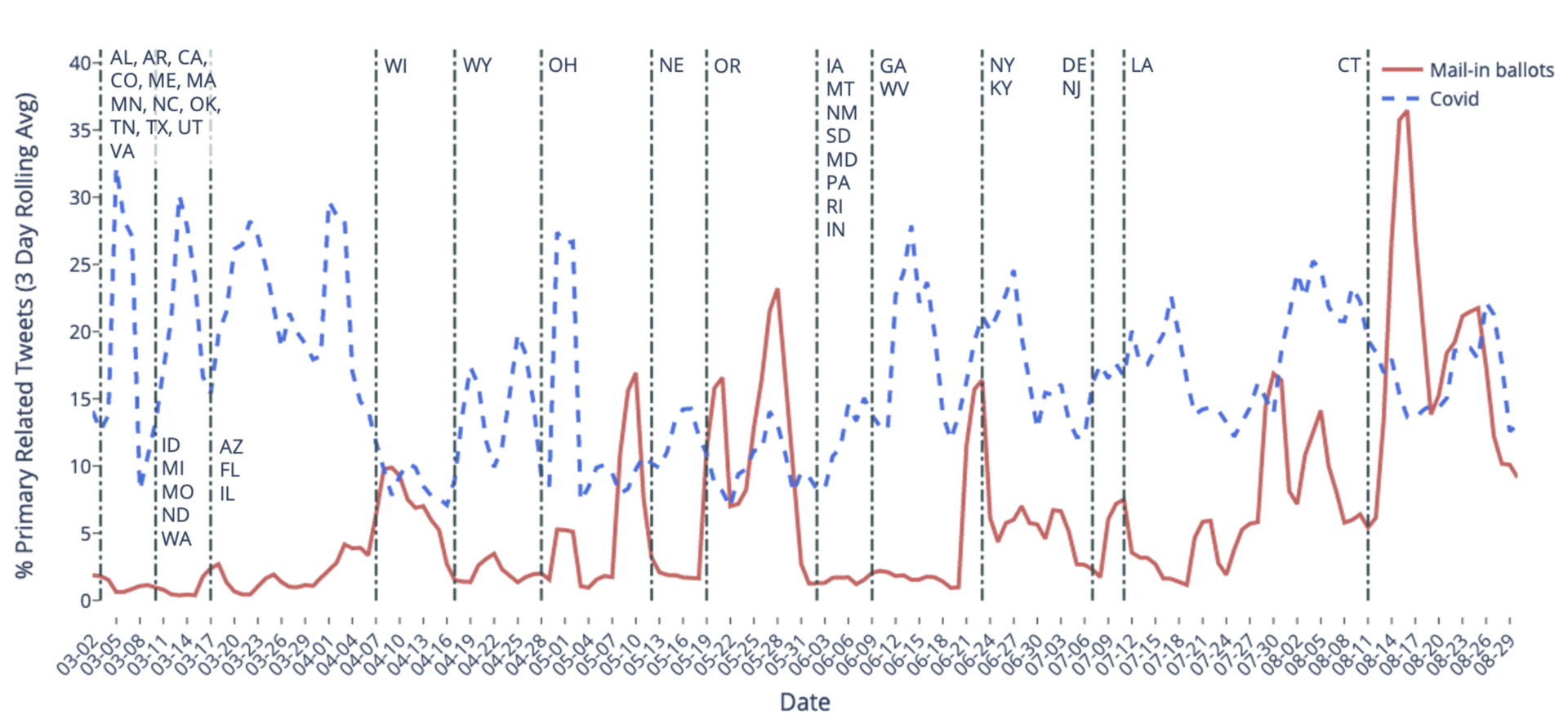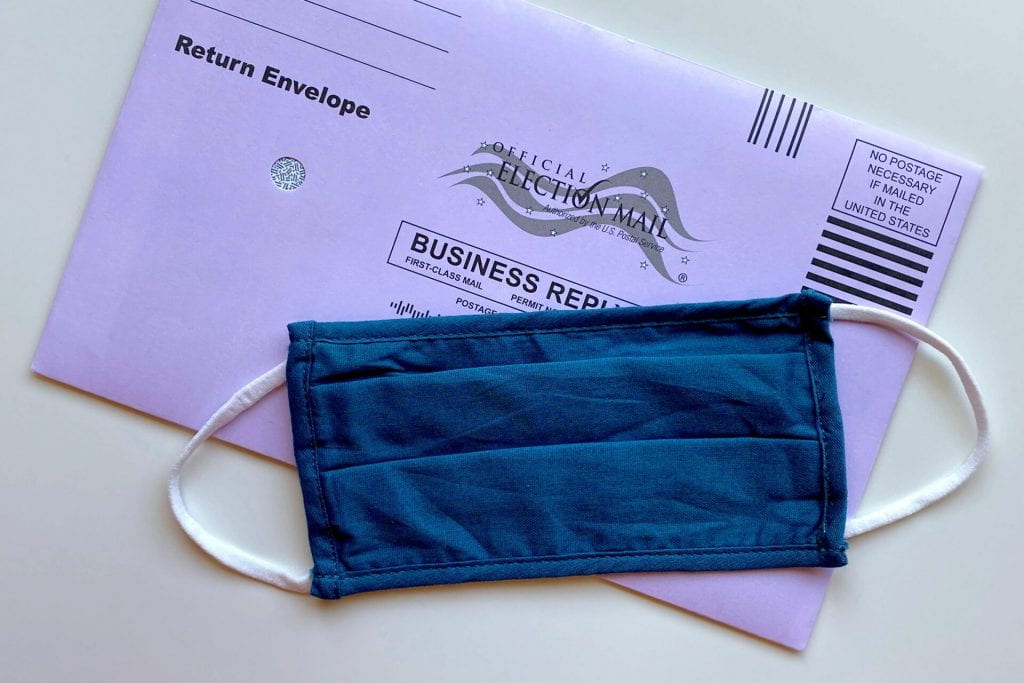On March 3, CCLP-supported research regarding COVID-19 misinformation and the 2020 U.S. presidential election was published in the Harvard Kennedy School Misinformation Review. Led by USC Annenberg Professor Emilio Ferrara, the study investigated different COVID-19 misinformation narratives occurring in the context of the 2020 U.S. Democratic primaries, using a subset of over 67 million tweets during the time frame March 1, 2020 through August 30, 2020. CCLP Director Geoffrey Cowan co-authored the essay that analyzes this Twitter dataset. The authors concluded that “the public sphere on Twitter is politically heterogeneous and the majority—liberal and conservative alike—advocates for wearing masks and vote-by-mail. However, a small, but dense group of conservative users push anti-mask and voter fraud narratives.”
Other key findings from the study include the following:
- “We first find, as expected, that Coronavirus discourse dominates much of the Democratic primary discussion during our observation period. This includes rulings by the United States Supreme Court surrounding religious gatherings to allegations that the Coronavirus is a hoax perpetrated by the Democratic party (Blue dotted line, Figure 1).
- We then identify a second narrative surrounding mail-in ballots and the role the United States Postal Service (USPS) played in the distribution and collection of these ballots. In August, The Washington Post, along with many other news organizations, reported that Postmaster General Louis DeJoy had restructured the postal office and reallocated funding, leading to slower ballot delivery and returns during the primaries, with ramifications stretching beyond the Democratic primaries into the presidential elections (Red solid line, Figure 1).
- We also find that there is general discourse surrounding imposed lockdowns, their efficacy, and constitutionality, as the United States faced a second wave during the summer of 2020 (Orange dotted line, Figure 2).
- Finally, we observe numerous tweets surrounding masks and face coverings, with a large number of tweets perpetuating the messaging that masks are a hoax and are ineffective (Purple solid line, Figure 2).”
Read the full article here.

FIGURE 1. MAIL-IN BALLOTS AND COVID-19-RELATED TWEETS WITHIN PRIMARIES-RELATED TWEETS, PLOTTED AS A 3-DAY ROLLING AVERAGE OF THE PERCENTAGE OF PRIMARY-RELATED TWEETS. STATE ABBREVIATIONS ALIGNED WITH THE DAY ON WHICH THE RESPECTIVE STATE CONDUCTED THEIR DEMOCRATIC PRIMARY.

FIGURE 2. LOCKDOWN AND MASK-RELATED TWEETS WITHIN PRIMARIES-RELATED TWEETS, PLOTTED AS A 3-DAY ROLLING AVERAGE OF THE PERCENTAGE OF PRIMARY-RELATED TWEETS. STATE ABBREVIATIONS ALIGNED WITH THE DAY ON WHICH THE RESPECTIVE STATE CONDUCTED THEIR DEMOCRATIC PRIMARY.
